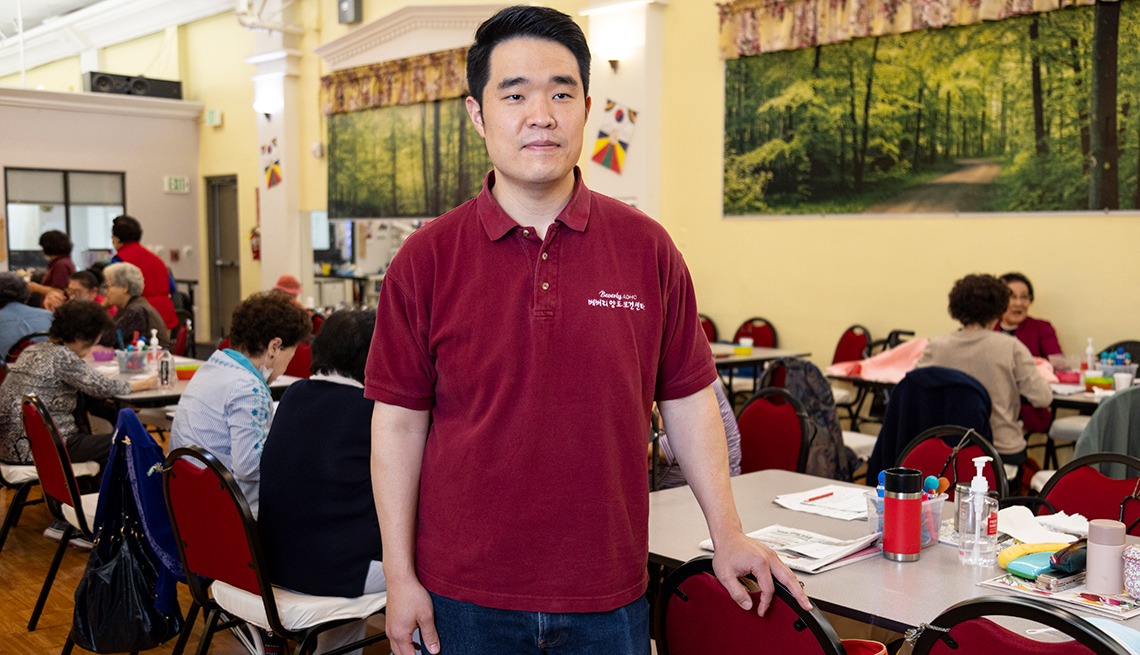AARP Eye Center
Adult Day Health Sector in Fiscal Crisis
As program director for his family-owned adult day health care center in Los Angeles, Richard Lee takes pride in the fact that he’s helping to meet the needs of his community’s aging population.
But it’s not easy to keep the business afloat. Lee didn’t draw a paycheck in March and wasn’t able to make a rent payment on the center’s facility for at least two months this spring.
“We’re basically the equivalent of a paycheck-to-paycheck business, and that’s how most centers are at this point,” says Lee, who helps run the Beverly Adult Day Health Care Center in Koreatown.
The center, which opened in 2003, caters to low-income residents of Koreatown and adjacent communities whose average age is 85. The participants don’t speak English, and the center serves as a vital connection to resources in the community.
California ranks No. 1 in terms of capacity to serve older adults in adult day centers on AARP’s most recent long-term care scorecard. But the industry is struggling; nationally, adult day services dwindled by 11.5 percent in 2020–2021, the AARP scorecard shows, with COVID-19 pandemic closures playing a role.
In California, providers and advocates say the adult day sector is in crisis—battered by political neglect, pandemic shutdowns and a meager Medicaid reimbursement rate.
California has fewer than 300 adult day facilities, down from about 365 before the Great Recession, which was a tipping point, says Lydia Missaelides, interim executive director of the California Association for Adult Day Services. Today, some counties have no adult day centers at all.
The situation has put vital care for 35,000 low-income Californians who use adult day centers at risk, says Nina Weiler-Harwell, an associate director for advocacy and community engagement with AARP California.
“Without these critical services, [they] could end up in an institution such as a nursing home,” she says.
Adult day centers typically pick up participants at their homes and offer basic medical care, meals and activities such as exercise and music. They help older adults maintain independence and often delay entry into more expensive long-term care. They also give family caregivers a needed break.

But in many states, such services don’t get the kind of political attention—or funding—they merit, says Tina Sadarangani, a nurse practitioner and assistant professor at New York University’s Grossman School of Medicine who studies adult day services.
“The public’s perception of [adult day] centers is that they are dancing and dominoes,” she says. However, research shows that adult day services help to slow cognitive and physical decline, Sadarangani says. In addition, adult day staff often identify new medical issues early on, helping to keep people out of hospitals.
But because they are not considered “essential services,” many facilities in California and elsewhere were shuttered during the pandemic, Sadarangani says. And the road to recovery has been rough.
In California, facilities generally rely on reimbursement from the state’s Medicaid program, Medi-Cal, the joint federal-state health insurance program for low-income residents. The Medi-Cal reimbursement hasn’t changed since 2009, with centers currently receiving $76.27 a day per resident—about $45 less than if the rate had simply been adjusted for inflation.
A Feb. 21 malware attack on Change Healthcare, which processes as much as 50 percent of U.S. medical claims, led to months of delayed payments—and put further strain on strapped centers.
Adding to the frustration: Some managed care plans in California reimburse centers at a lower rate than the Medi-Cal standard, Missaelides says. The centers have little power to negotiate, she adds.
“It’s just been a nightmare,” she says. “I’ve got centers whose cash flow has dried up.”
She and other advocates are pushing legislation that would bar managed care plans from paying below the standard rate. AARP supports the bill.
Kay Lee, whose family owns three centers in Southern California and a fourth in the northern part of the state, says the situation is “dire” and needs to be addressed. (She is not related to Richard Lee.) Her family’s centers mainly serve residents who speak Chinese, Korean and other languages. Most are on Medi-Cal; a few pay out of pocket.
She says the low reimbursement reflects a disregard for lower-income immigrant populations. The state’s adult day centers can rebound, she says, if investments are made to support “the most marginalized folks in this community who ... have contributed as members of society.”
Richard Lee, whose center is just a block from where he grew up, says the need in his community is growing, particularly after a pandemic that led to increased loneliness and isolation.
“They’ve been through a lot in their lives,” he says. “I feel just very fortunate to be able to serve the population that we do. And I hope to be able to do so in the future.”
Barbara Kingsley-Wilson, a California-based freelancer, covers health care, housing and other issues. She has written for the Bulletin since 2020.
For more on caregiving

































































